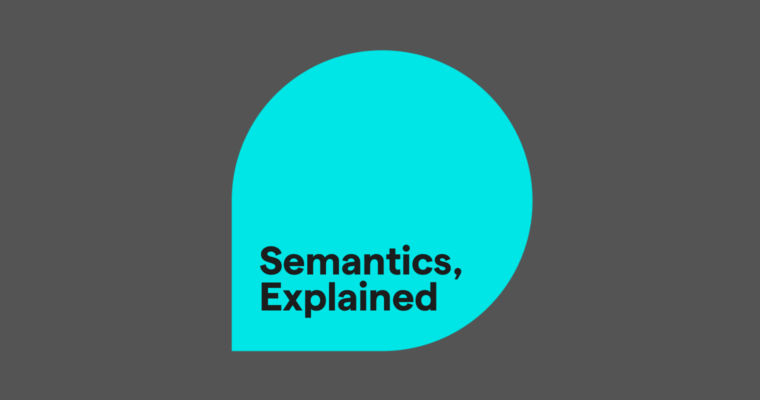
- The simple past is a verb tense used to refer to an action or a series of actions that were completed in the past.
- Use the simple past tense to talk about things that happened before or existed before now, to talk about a past state of being, or to make clear that something occurred at a specific time in the past.
- The simple past tense of regular verbs is formed by adding -ed to the infinitive form of a verb (e.g., walk becomes walked).
- In the simple past tense, negative statements are formed by adding did not or the contraction didn’t between the subject and the infinitive form of the verb (e.g., “I didn’t walk to work that day.”).
- To ask a question in the simple past tense, the formula is did + [subject] + [infinitive form of verb].
The simple past is the most basic past tense in English, and it is used to describe events or states that both began and ended before now. Understanding the simple past tense makes your writing clearer, with timelines and sequences of events that are easy to follow.
Here, we’ll provide guidelines for how to use the simple past tense in your writing.
Table of contents
What is the simple past tense?
When to use the simple past tense
How to form the simple past tense
How to make the simple past tense negative
How to ask a question in the simple past tense
Present perfect tense vs. simple past tense
Past perfect tense vs. simple past tense
Common verbs in the simple past tense
What is the simple past tense?
The simple past tense is a verb tense used to talk about something that happened or existed before the present. It communicates that the action or state of the verb occurred at a specific time in the past and then was completed. That specific time can be implicit or explicit. Here are a couple of examples of sentences using the simple past tense:
When to use the simple past tense
Use the simple past tense whenever you are talking or writing about an event that took place or was true at some point in the past.
To talk about an act that already happened
The simple past tense usually communicates that the activity described by a verb both began and ended at a definite time in the past:
It is the marked beginning and ending of the action that makes the simple past different from the past continuous tense, which is used to talk about past events that happened over a period of time or in an ongoing way.
To talk about a past state of being
You can also use the simple past to talk about a past state of being, such as the way someone felt about something. This is often expressed with the simple past tense of the verb to be and an adjective, a noun, or a prepositional phrase. Here are some examples:
With adverbs and adverb phrases for past time
The simple past tense is frequently used with adverbs and adverbial phrases that modify the verb by identifying specifically when in the past its action occurred. Below are some common examples of these, with definitions:
- yesterday: on the day before today (can also modify parts of the day such as yesterday morning/afternoon/evening)
- the day before yesterday: two days ago
- last [X]: during the most recently passed of a certain unit of time (last month, last year, last night, last Tuesday, last fall)
- the [X] before last: during the unit of time before the most recent one (the night before last, the week before last, the month before last)
- [X] ago: during the unit of time the specified number of units in the past (three days ago, a month ago, four weeks ago, eight hours ago)
- in/on [X past date]: on a specific calendar date or in a specific calendar period (in 2020, on October 23, during 2005, etc.)
Here are a few examples of how these adverbial expressions for time are used in sentences to modify verbs in the simple past tense:
How to form the simple past tense
The correct verb form in the simple past tense varies based on whether it is regular or irregular.
Forming the simple past tense of regular verbs
Most verbs in the English language follow the same pattern in how they are conjugated (i.e., how they change form to show time with tense, as well as to show their other properties). These rule-following verbs are called regular verbs. To form the simple past tense of regular verbs, you add -ed to the root form of the verb. If the root form ends in e, you drop that e before adding the -ed:
| Root | Simple Past Tense |
| play | played |
| type | typed |
| listen | listened |
| push | pushed |
| love | loved |
| cook | cooked |
Here are a couple of examples of the above regular verbs in their simple past tense forms:
If a regular verb ends in a consonant preceded by a single vowel, its simple past form is often spelled with a doubled consonant before -ed: Knit becomes knitted; admit becomes admitted. This is because if you just added -ed to these words, reading the simple past form phonetically would change the pronunciation of the short vowel to a long one. (In other words, if knit became knited rather than knitted, it would look as though it should be pronounced like knighted.)
Forming the simple past tense of irregular verbs
Irregular verbs do not follow the simple pattern of adding -ed or -d to their root to form the simple past tense. There are nearly 200 common examples of these verbs in English, and they are conjugated in many different ways. Let’s look at some patterns irregular verbs can follow to form the simple past tense, with example sentences.
The simple past tense of some irregular verbs looks exactly like the root form:
| Root | Simple Past Tense |
| put | put |
| cut | cut |
| set | set |
| cost | cost |
| hit | hit |
Here are a couple of examples of the above irregular verbs in their simple past tense forms:
For other irregular verbs, including to be, the simple past forms are more erratic:
| Root | Simple Past Tense |
| be | was/were |
| go | went |
| teach | taught |
| do | did |
| rise | rose |
| see | saw |
| hang | hung |
Here are a couple of examples of the above irregular verbs in their simple past tense forms:
Note that, with the exception of to be, verbs in the simple past tense do not need to agree in number with their subjects.
How to make the simple past tense negative
There is a straightforward formula for making verbs in the simple past tense negative, and it’s the same for both regular and (with the exception of to be) irregular verbs. The formula is did not + [root form of verb]. You can also use the contraction didn’t instead of did not.
For the irregular verb to be, you don’t need the auxiliary verb did when you make it negative. When the subject of the sentence is singular, use was not or wasn’t. When the subject is plural, use were not or weren’t.
How to ask a question in the simple past tense
To ask a question in the simple past tense, use the formula did + [subject] + [root form of verb]. Here are some examples of questions using the simple past:
One exception: When asking a question in the simple past with the verb to be, don’t use the auxiliary did and do make sure the verb matches the subject in person. The formula is was/were + [subject].
Present perfect tense vs. simple past tense
The present perfect tense is like the simple past tense in that it refers to past actions or conditions. However, the present perfect is used to say that something was just recently completed, say that something that began in the past continues to the present, or refer to a time in the indefinite past. You form the present perfect tense with the formula have/has + [past participle of main verb]. Here are some examples using the present perfect:
These uses of the present perfect are in contrast with the simple past, which indicates a more specific time in the past or a longer-ago one by comparison. The following side-by-side examples of the present perfect and the simple past demonstrate how the two tenses serve different but complementary purposes.
Past perfect tense vs. simple past tense
The past perfect tense is another way of talking about the past. It refers to something that occurred earlier than another time in the past (whether that more recent time is stated or left implicit). In other words, you use it when you’re already talking about the past and need to refer to something even further back in time. The past perfect is formed with the formula had + [past participle of main verb]. Here are a couple of examples of the past perfect:
The simple past and the past perfect naturally appear together frequently in sentences that refer to two different times in the past. In the following examples, you can see how the past perfect functions alongside the simple past:
Common verbs in the simple past tense
Below you can find lists of some of the most common regular and irregular English verbs with their simple past tense conjugations. The tables provide the infinitive form of the verb (its root form with to), the simple past tense conjugation, and the negative simple past tense conjugation.
Common regular verbs in the simple past tense
| Infinitive | Past Tense | Negative |
| to ask | asked | did not ask |
| to work | worked | did not work |
| to call | called | did not call |
| to use | used | did not use |
Common irregular verbs in the past tense
| Infinitive | Past Tense | Negative |
| to be | was/were | was not/were not |
| to have | had | did not have |
| to do | did | did not do |
| to say | said | did not say |
| to get | got | did not have |
| to make | made | did not make |
| to go | went | did not go |
| to take | took | did not take |
| to see | saw | did not see |
| to come | came | did not come |
Conclusion
When you’re talking about an event that took place completely in the past or a state of affairs that used to be the case and isn’t anymore, the simple past tense is the verb tense you turn to. It’s the most essential past tense in the English language—mastering it is the key that unlocks writing about the past, whether that’s the history of an ancient civilization or what you ate for breakfast yesterday.
Simple past tense FAQs
What is the simple past tense?
The simple past is a verb tense used to describe things that already happened. It communicates that the action or state of a verb occurred at a specific time in the past and then was completed.
What are some examples of the simple past tense?
- I ate cereal for breakfast this morning.
- Morganucodon was an early mammal that lived with dinosaurs.
- Dogs evolved alongside humans.
How do you form the simple past tense?
To form the simple past tense of a regular verb, add -ed to the root form of the verb: play/played. If the root form ends in e, drop e before adding -ed: bathe/bathed. If it ends in a consonant preceded by a single vowel, double the consonant before adding -ed: pat/patted.
Irregular verbs form the simple past tense in a wide variety of ways. You can look up the root form in a dictionary to see what its simple past tense conjugation is.






